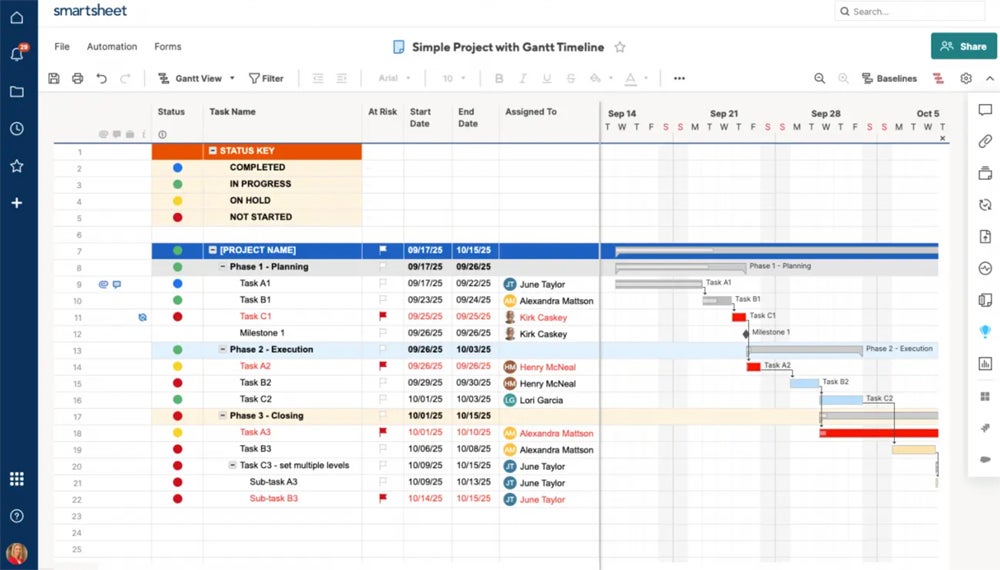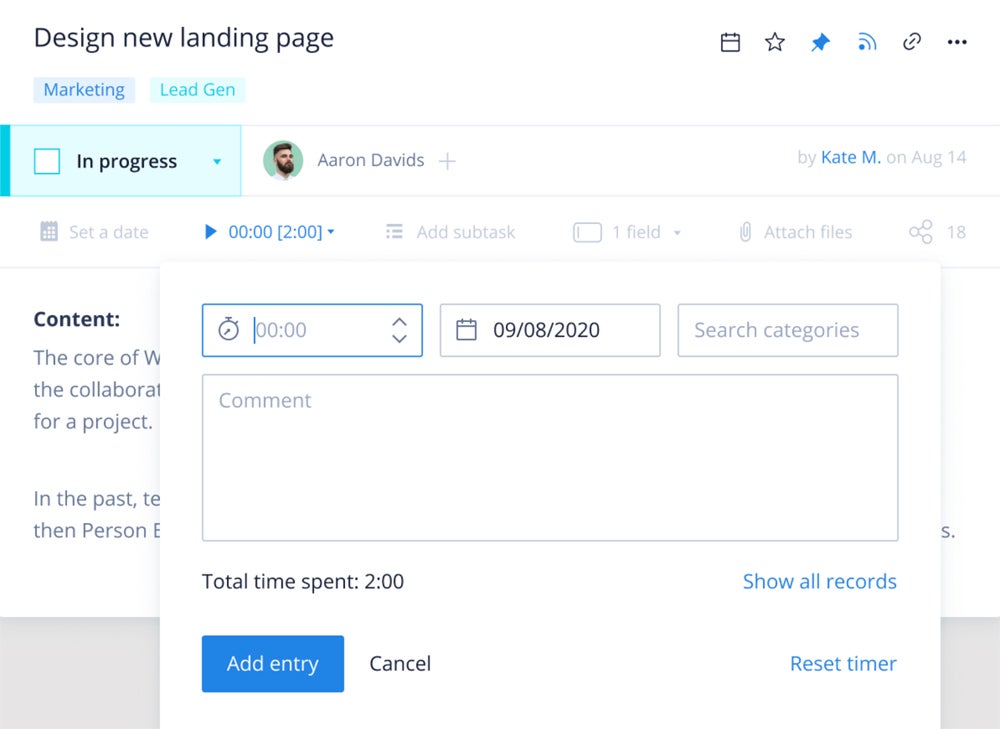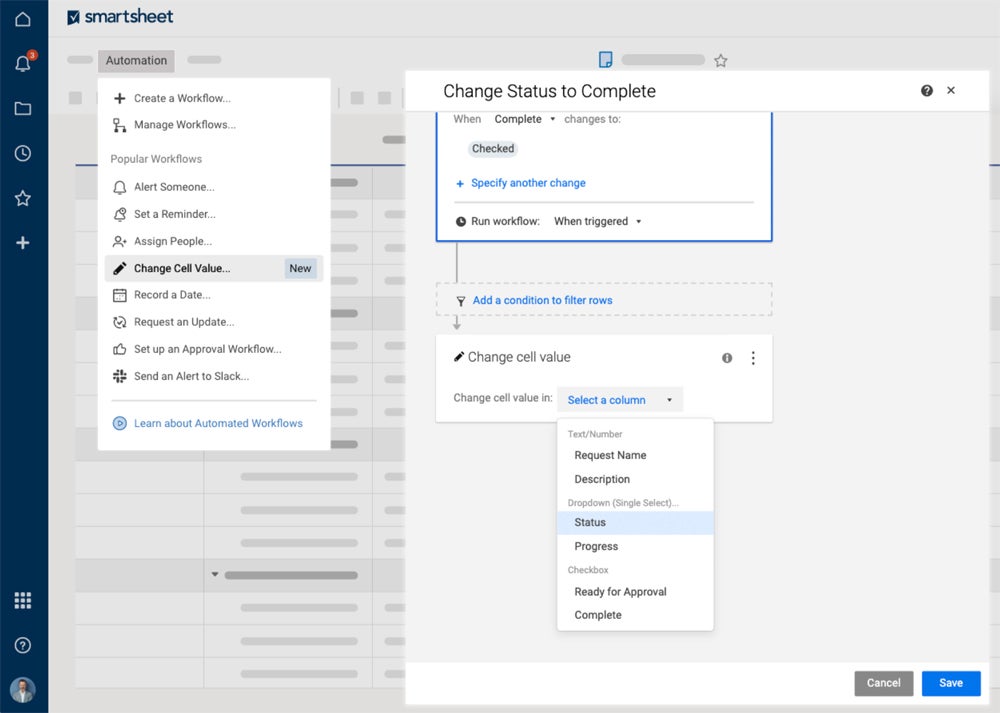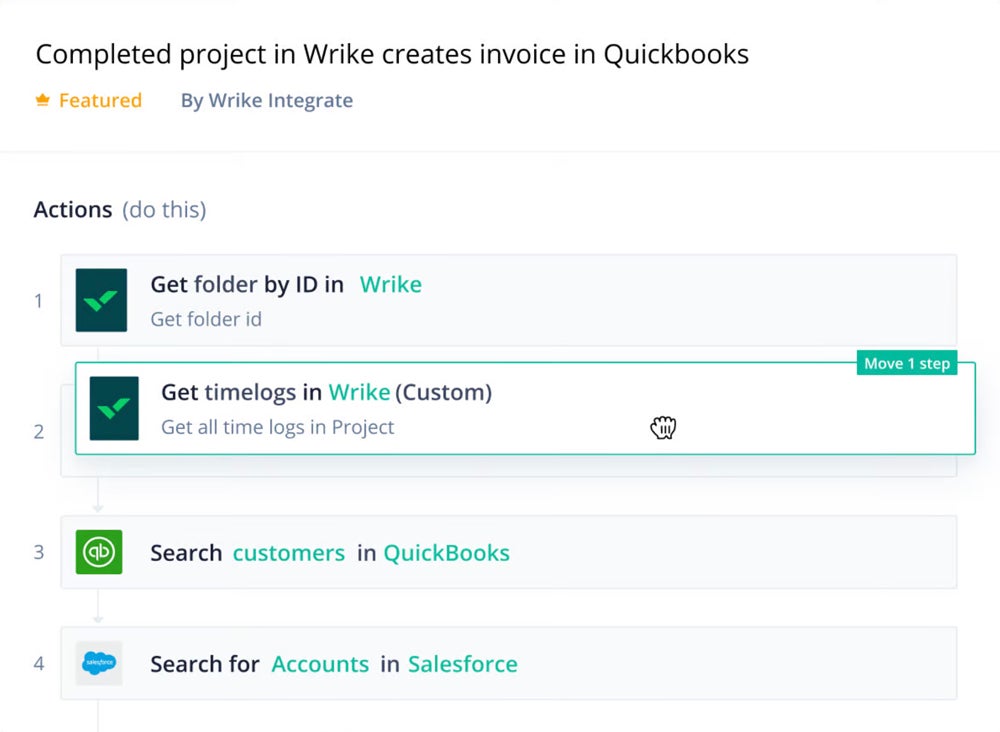Wrike and Smartsheet are two of the most popular project management software options available today. While the two platforms appear similar upon general overview, I uncovered plenty of differences once I started to dig into the features in more detail.
After comparing them closely, I recommend Wrike for small teams looking for a free tool and companies that need more integrations. Meanwhile, Smartsheet’s free plan offers more features for individual users and month-to-month billing for companies who don’t want to be locked into an annual contract.
Smartsheet vs Wrike: Comparison table
| Features | ||
|---|---|---|
| Our rating (out of 5) | ||
| Starting price (billed annually) | ||
| Free plan | ||
| Project views | ||
| Time tracking | ||
| Integrations | ||
|
|
Smartsheet vs Wrike: Pricing
At first glance, Smartsheet and Wrike seem to have similar pricing structures: They both offer a forever free plan, two paid plans with comparable pricing, and at least one enterprise plan with undisclosed pricing (Wrike offers two enterprise plans vs. Smartsheet’s single enterprise plan).
Smartsheet’s free plan only supports one user and two editors, compared to Wrike’s generous free plan that supports unlimited users. However, I do appreciate that Smartsheet offers a month-to-month pricing option, whereas Wrike’s pricing is annual only, which may be off-putting to companies that don’t want to be locked into a long-term contract.
Smartsheet pricing
- Free: $0 for one user and up to two editors.
- Pro: $9 per user per month, billed annually, or $12 per user per month, billed monthly.
- Business: $19 per user per month, billed annually, or $24 per user per month, billed monthly.
- Enterprise: Quotes are available upon request.
A 30-day free trial is available for the business plan. For more information, read the full Smartsheet review and view this list of Smartsheet alternatives.
Wrike pricing
- Free: $0 per user per month for unlimited users.
- Team: $9.80 per user per month billed annually.
- Business: $24.80 per user per month billed annually.
- Enterprise: Contact sales for a custom quote.
- Pinnacle: Contact sales for a custom quote.
A 14-day free trial is available for all of Wrike’s paid plans. For more information, read the full Wrike review and view this list of Wrike alternatives.
Smartsheet vs Wrike: Feature comparison
Free plans
Winner: Wrike
In terms of team size, Wrike’s free plan offers unlimited users, while Smartsheet only allows one user, two editors, and two viewers. If you’re looking for small business project management software to use for your whole team, Smartsheet’s free plan isn’t going to suffice — though I can see it working for individual use.
When it comes to features, however, Smartsheet’s free plan offers far more than Wrike. With Smartsheet, you get unlimited reports and dashboards, as well as four (out of five) project views, including both Gantt charts and Kanban boards. Its free plan even supports 250 automations per month and access to integrations.

Wrike’s free plan is more limited, offering no automations, dashboards, analytics, or integrations. Given the many free project management software platforms that offer generous plans at no cost, I was a bit disappointed to see this. But Wrike’s free plan does get access to multiple project views as well as subtask management, Smart Search, and use case project templates. Plus, it offers unlimited users, making it a better choice overall for teams.
Time tracking
Winner: Wrike
Wrike is fairly well known for their employee time tracking software, which comes with the Business, Enterprise, and Pinnacle plans. Smartsheet also offers native time tracking, but that is part of its resource management capabilities, which is a paid add-on not included in the base plans. Neither Wrike nor Smartsheet offer time tracking in their free plans. You can also use a third-party time tracking software and integrate it with either platform.

Automation
Winner: Tie
Wrike offers a capped number of automations per user, which varies by plan. Meanwhile, Smartsheet offers a certain number of automations per plan for all users. For example, Wrike allows 50 task automations per user in their Team plan, while Smartsheet has 250 automations per month in their Pro plan.

I crunched the numbers for the two cheapest plans and found that you’ll get more automations per person with Smartsheet if you have 12 users or fewer, but you’ll get more automations overall with Wrike if you have 13 users or more.
I recommend taking into account your own team size, automation use frequency, and budget to get a more accurate apples-to-apples comparison.
Integrations
Winner: Wrike
Smartsheet has over 100 integrations, whereas Wrike has over 400 integrations. Both software do integrate with standard business tools like Microsoft Teams, Google Workspace, and Slack. Teams can also find compatible third-party applications for data visualization, communication, business intelligence, marketing, and security for each platform.

While it’s great that Wrike offers such a large number of connections, some of Wrike’s integrations are limited to the paid Wrike Integrate add-on, and it’s not entirely clear to me from the website which integrations are paywalled. It’s fairly typical for project management software to restrict some integration to higher tier plans, but I found it a bit unusual that Wrike chose to make them a paid add-on.
If you are looking for a specific integration to use with Wrike, it’s definitely worth confirming with the sales team if it’s included with a plan tier or would require an additional cost with the add-on.
Security
Winner: Tie
Users get advanced security features such as SAML single sign-on (SSO) in both Smartsheet and Wrike, but these features are limited to the Enterprise tier on both platforms. Wrike also offers an additional layer of encryption through an add-on called Wrike Lock. Meanwhile, Smartsheet offers various a la carte security add-ons, including data retention policies and event reporting.
Smartsheet pros and cons
| Pros | Cons |
|---|---|
|
|
Wrike pros and cons
| Pros | Cons |
|---|---|
|
|
Should you use Smartsheet or Wrike?
Choose Smartsheet if . . .
- You are looking for free project management software for individual use.
- You want a month-to-month billing option.
- You prefer a more traditional-looking interface that is reminiscent of Excel.
- You need advanced reporting and analytics tools.
Choose Wrike if . . .
- You want free project management software with unlimited seats.
- You need more integrations and are willing to potentially pay for the add-on.
- You want annual billing instead of month-to-month.
- You prefer native time tracking to be included in the base plan.
FAQ
Is Wrike similar to Smartsheet?
Wrike and Smartsheet are both project management software, and they do offer many of the same features. However, they approach their pricing structures differently, so you need to compare the platforms closely to figure out how much you will have to pay for your top-choice tools.
For instance, Smartsheet offers far more features on its free plan but limits it to only one user, so it’s useless for teams. In contrast, Wrike’s free plan supports unlimited users but offers very limited features.
What are the limitations of Smartsheet?
Smartsheet only supports one user and two editors on its forever free plan. Additionally, Smartsheet’s spreadsheet-inspired interface can feel outdated compared to its alternative’s more colorful, visually appealing interface. Smartsheet also limits multiple resource management features, including native time tracking, to a paid add-on.
Review methodology
To compare Smartsheet vs Wrike, I took advantage of free trials so I could test the software myself. During the writing of this review, I compared features such as project views, time tracking, automations, integrations, and security. I also considered other factors, such as pricing, customer support, and user interface design.



